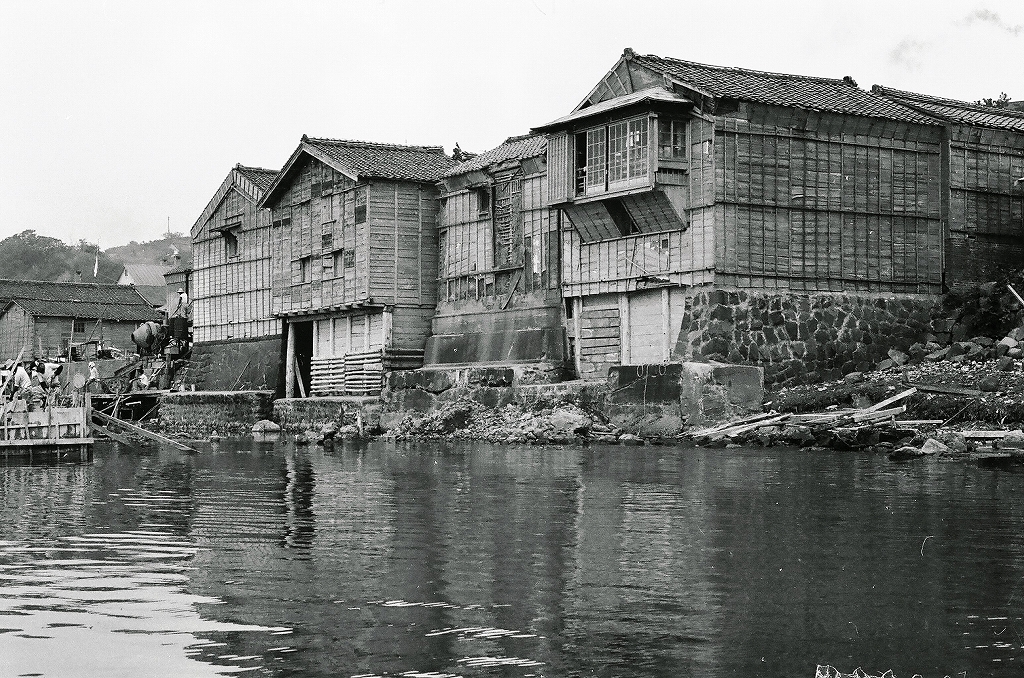
The shores of Esashi half a century ago (photo by Matsumura Takashi)

The shores of Esashi half a century ago (photo by Matsumura Takashi)
Inishie Kaido, with its streetscape from the Edo period, is a sightseeing hub that includes merchants’ buildings and the Ubagami Daijingu shrine. Community development activities thrive on this shopping street, where events that convey Esashi’s history and culture have taken place for several years.
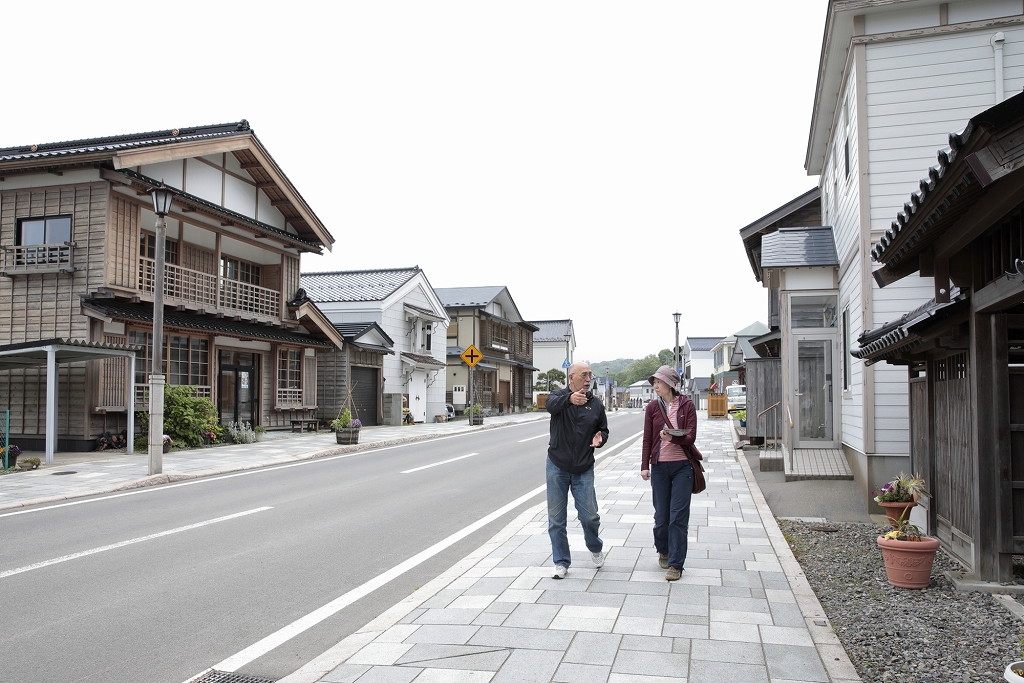
Walking along Inishie Kaido
Our guide, Muroya Motoo is one of the main organizers of the various events that take place on the shopping sheet. One Hundred Storytellers is an activity being promoted as part of the walking tours of the town. Local people become the storytellers and tell visitors about the town and their own houses. According to Muroya, “It’s more interesting when stories come from the mouths of the locals.”
Walk along Inishie Kaido and a store with Japanese-style architecture that looks to be oozing with history appears. Old bicycles and advertising signs are displayed. Muroya opens the door and walks inside. Iwasaki Shoten was one of the earliest shops to sell bicycles. A merchant’s atmosphere remains in the Edo period building, which has a long dirt floor that stretches towards the back of the building and distinctive eaves.
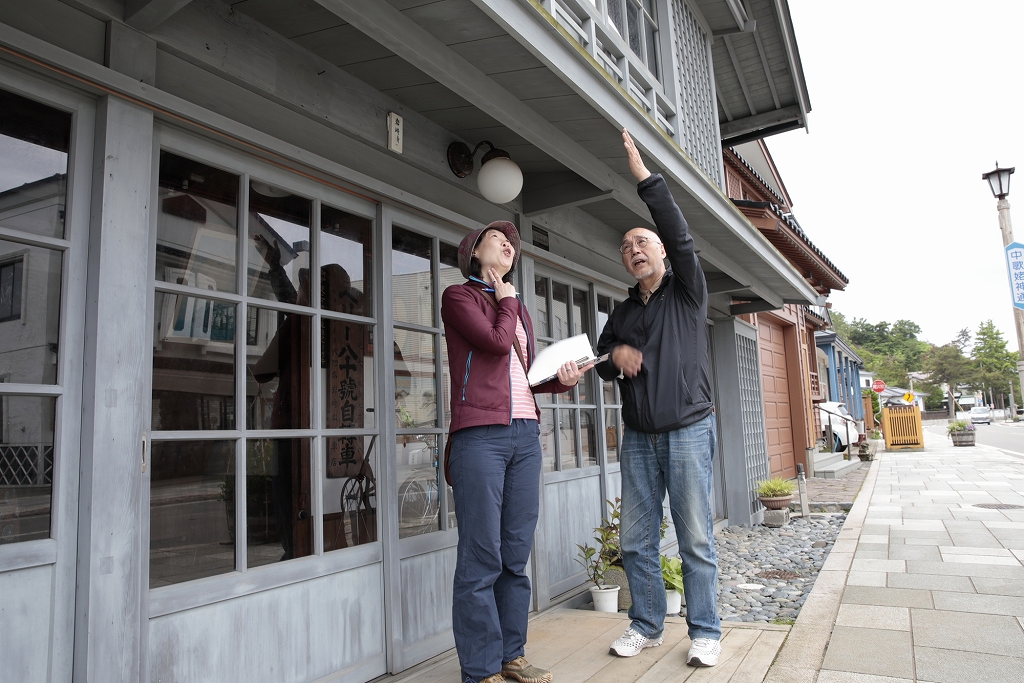
The overhanging eaves of Iwasaki Shoten were a characteristic of houses from the Sea of Japan side of Honshu.
Next, we visited what is currently a normal house but was once a Japanese confectioner’s store known as Nishikawa Shoten. Equipment from when it was a confectioner’s store is displayed in the entrance.
In this way, Esashi is working on a style of tourism in which tourists wander around the town while communicating with the locals. By coming into contact with the buildings owned by the locals, the tourists get to know about the charms of the town in a way they would not have done just by walking around. Those charms are in the memories that remain amid the lives of the people who reside there.
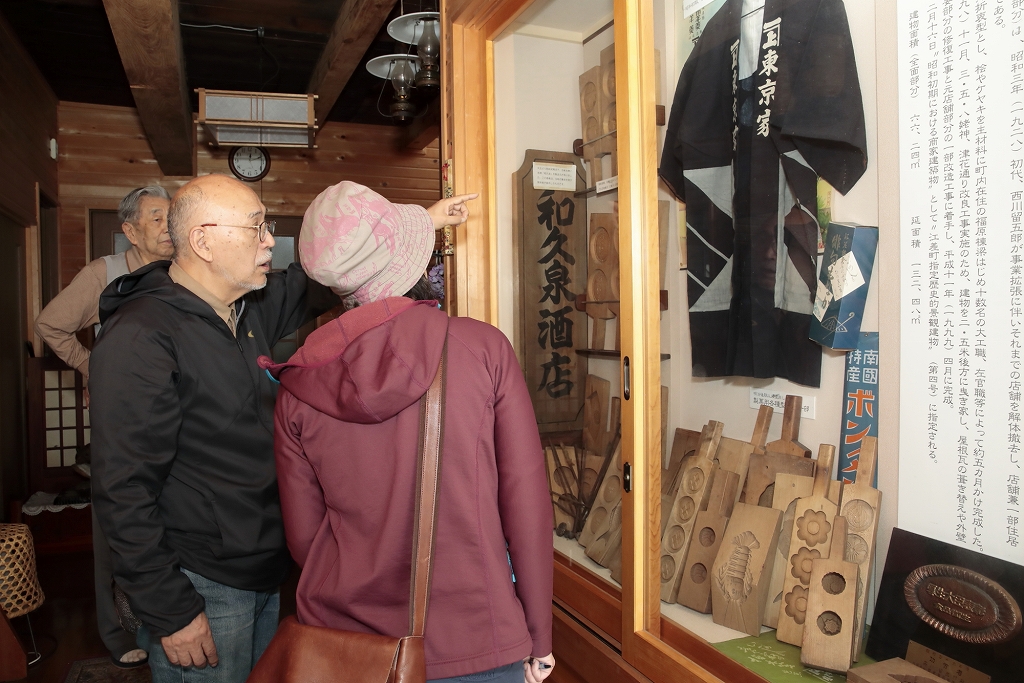
Precious items displayed in the Nishikawa residence
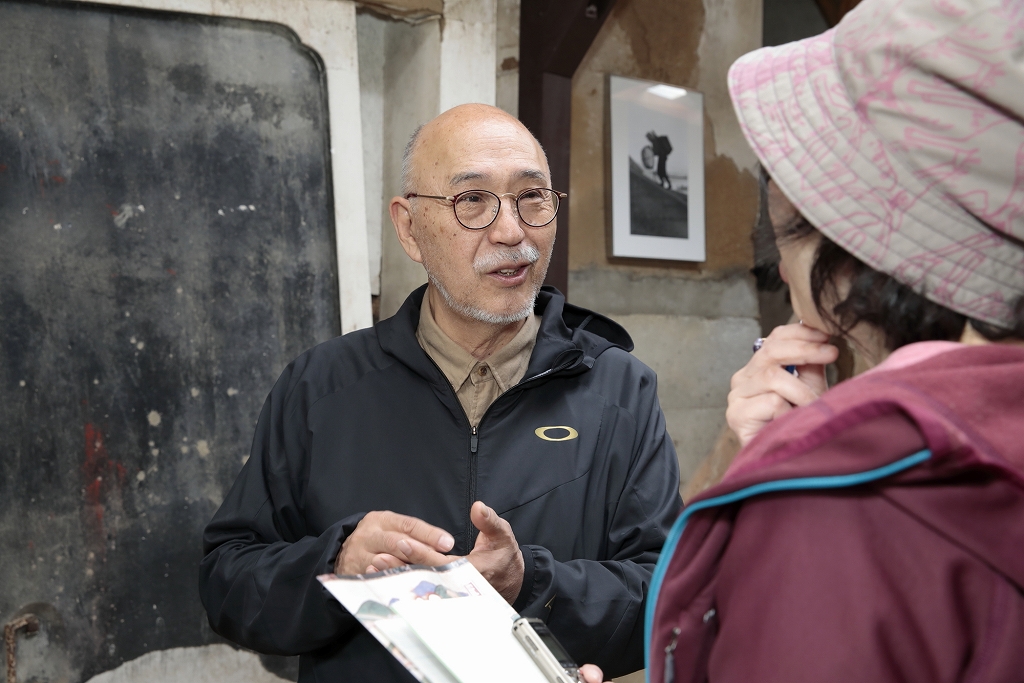
Muroya Motoo, who runs a paint store for a living
The activities of the shopping streets’s One Hundred Storytellers were prompted by a local literary magazine known as Esashiso. The representative of the publisher, Matsumura Takashi writes the articles and Muroya is responsible for the photos. Muroya became aware of the fascination and importance of the stories while talking to the townspeople.
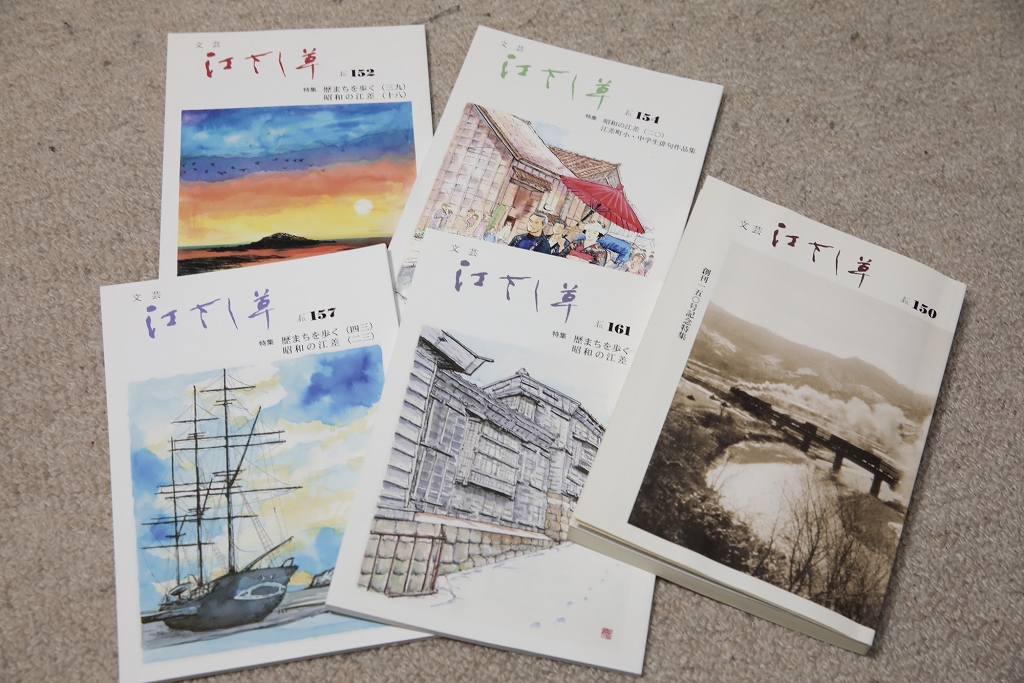
Esashiso
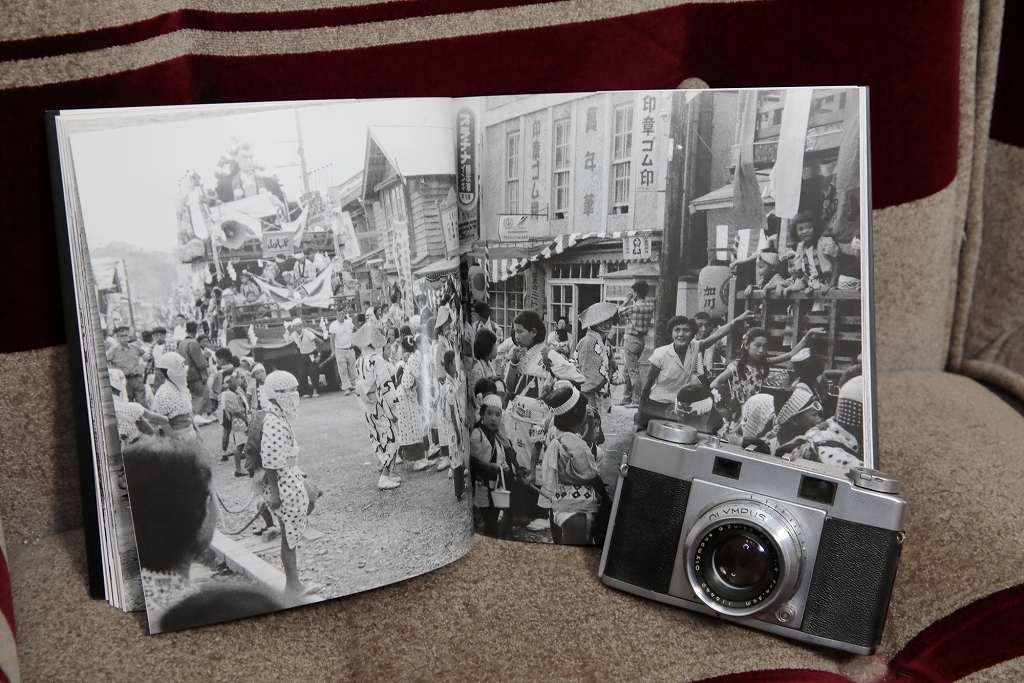
The first camera he ever bought
In the late 1960s and early ‘70s, the town’s scenery began to change dramatically. The shores on which wholesalers’ and merchants’ buildings stood were reclaimed for the construction of a national highway. “It was such a waste that scenery like that was disappearing. I thought I had to do something to save it.”
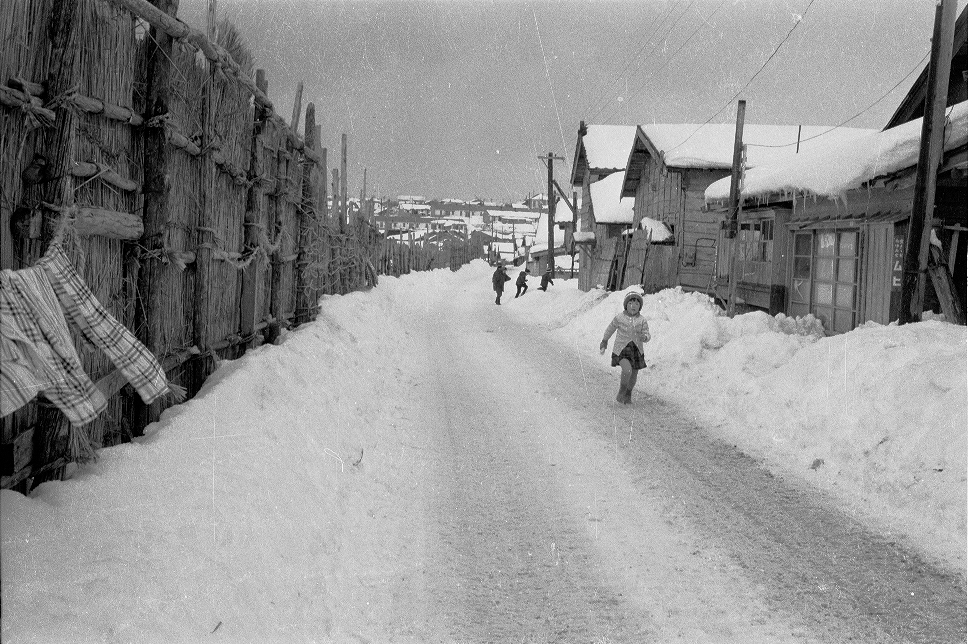
In autumn, barricades are erected in the direction from which the wind blows, in preparation for winter (photo by Matsumura Takashi)

The shore before it was reclaimed (photo by Matsumura Takashi)
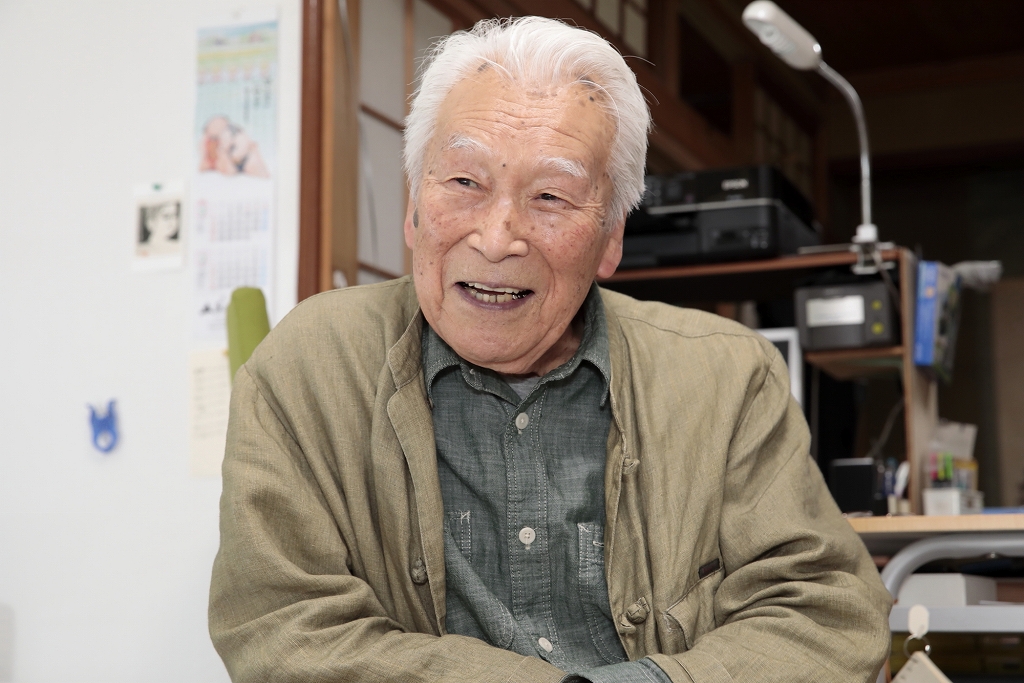
Matsumura Takashi is 92